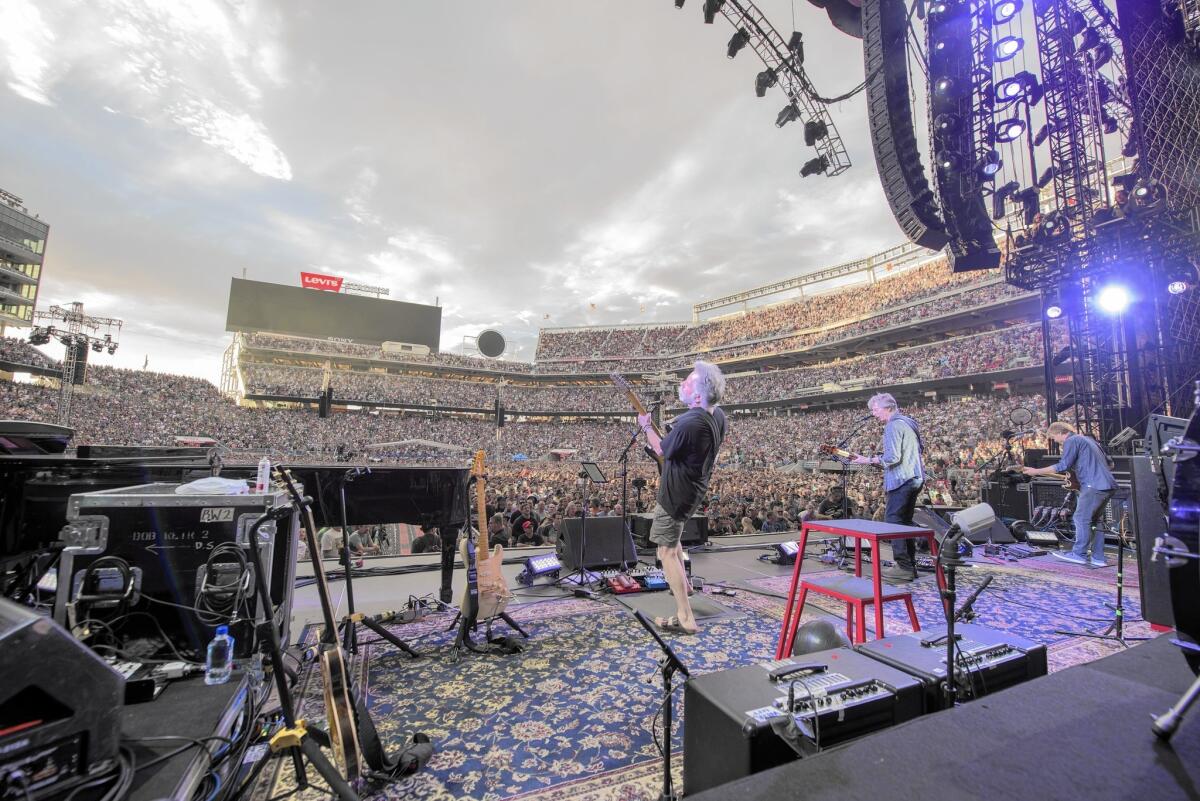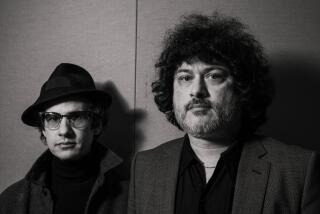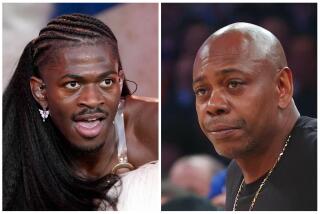Review: The Grateful Dead jam in mostly perfect harmony in Santa Clara

The VW buses were supplanted by Ubers. Marijuana was more often vaporized than burned. And bright iPhone screens replaced Bic lighters during âMorning Dew.â But the music was nearly the same: the Dead, jamming in (mostly) perfect harmony. No Jerry Garcia hologram necessary.
Those of us dizzy and lost amid the sonic tectonics and meandering melodies of the Grateful Deadâs concert in Santa Clara, Calif., on Saturday night could be forgiven for thinking that Leviâs Stadium was some sort of portal, and the rainbow that rose over the venue during âViola Lee Bluesâ added visual proof.
On Night 1 of five in its Fare Thee Well tour, the band that helped define the 1960s San Francisco psychedelic rock scene â and American hippie culture in general â returned to celebrate five decades as an entity. After a second Santa Clara show Sunday, the band will head to Chicagoâs Soldier Field for three shows over Independence Day weekend.
To say Night 1 was an emotional experience for some would be an understatement. One man waiting in the concession line remarked: âI think I cried through the first three songs nonstop.â
He wasnât alone. Within a few choice minutes, a football stadium-sized community was singing âwhat a long, strange trip itâs beenâ as the so-called core four â Bob Weir, Phil Lesh, Bill Kreutzmann and Mickey Hart â conjured and connected, as well-practiced, fluid and masterful as ever.
With his shaggy, gray-haired mustache-sideburn combo, Weir now looks like a retirement ranch Yosemite Sam, but he still tapped notes with a sharpshooterâs eye. Lesh played with typical grounded presence, a bassist standing front and center equally balanced between Chicago blues and Northern California minimalism. The drummers were tight, propellant, filled with momentum.
Filling in on lead guitar was Phishâs Trey Anastasio, who repeatedly struck with high wattage bolts. Not only an expert guitarist but also a dyed-in-the-wool Deadhead, the artist understood that the late Garciaâs philosophy required only that he collaborate, not duplicate. That simple instruction guided his every note. (This rare collaboration will be repeated at all the Fare Thee Well shows.)
Add in pianist Bruce Hornsby, whose set-ending lead vocals on âCasey Jonesâ turned into a gigantic âhigh on cocaine!â singalong, and keyboard player Jeff Chimenti, and the result was a Grateful Dead performance that morphed and evolved, variously nuanced, inventive, startling, sonically deep and at times way, way gone.
Presented in a glistening Silicon Valley facility built for the San Francisco 49ers with high-class concessions and an overall comfort level a few notches up from Max Yasgurâs Woodstock farm, the digs illustrated the distance traveled.
âIâm surprised they even let people like us in here,â commented one guy, awestruck at the cleanliness of the menâs room.
But this concert could have taken place inside Weirâs mustache and fans wouldnât have cared, given the set list.
Far from a greatest hits package, the Dead did what the Dead do: offered surprise selections from across a vast repertoire, with mindful focus on both collaboration and individual improvisation. Itâs been said before: To fully appreciate the band, you have to accept it as a group of jazz-minded players and surrender to the fluidity.
An astounding, expansive take on âSt. Stephenâ moved from epiphany to epiphany, a wild roller coaster of rhythms, signatures and melodies. With so many delicate hands working instruments with grace, touch and emotion, the band seemed to connect not only instrumentally but also at times astrally. Musical questions prompted improvised responses, the planned and unplanned intermingling.
Its great song âDark Starâ is one of the jewels in the Deadâs catalog, and Saturdayâs version was equal parts hymn and meditation. A song powered by bassist Leshâs gentle rudder, âDark Starâ was its own platform, one that the seven players explored over the course of 15 or 20 minutes.
Throughout that song and others â especially âCumberland Blues,â âCream Puff Warâ and âThe Other Oneâ â the musicians created real-deal emotion on a mass scale, the kind absorbed by kindred believers. When Weir and band moved into âTurn on Your Love Light,â made famous by Bobby âBlueâ Bland, the stadium had the vibe of a revival tent.
As usual, midway through the set, all the players save percussionists Hart and Kreutzmann left the stage, and for the next miniature eternity the two had a beat-based breakdown. Thumping drum, mbira, conga, timpani and various stringed beasts, the team didnât need to remind anyone that theyâve been tapping into the same universal beat for decades. You could hear it.
Gradually, the full band returned and eased back into the mystic: Leshâs utterly strange version of âWhatâs Become of the Babyâ was filled with noise, feedback, echoes that cascaded through the stadium.
Otherworldly? Yes. Worthy of praise? Most certainly. So expertly imagined as to suggest not just a reunion but a continuation, this was the Dead ideal, communal, filled with a generosity of spirit that united stage and seats.
More to Read
The biggest entertainment stories
Get our big stories about Hollywood, film, television, music, arts, culture and more right in your inbox as soon as they publish.
You may occasionally receive promotional content from the Los Angeles Times.











